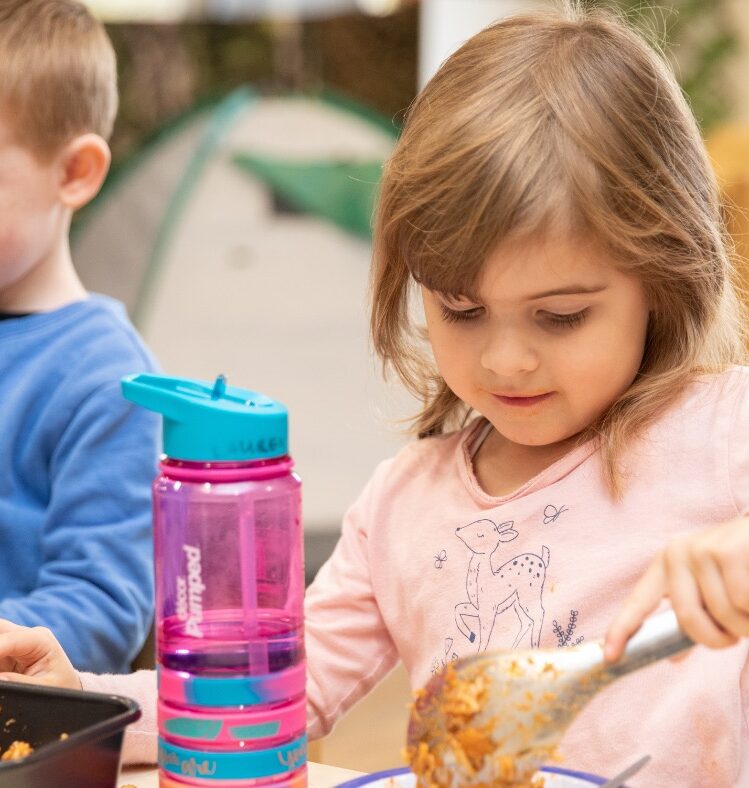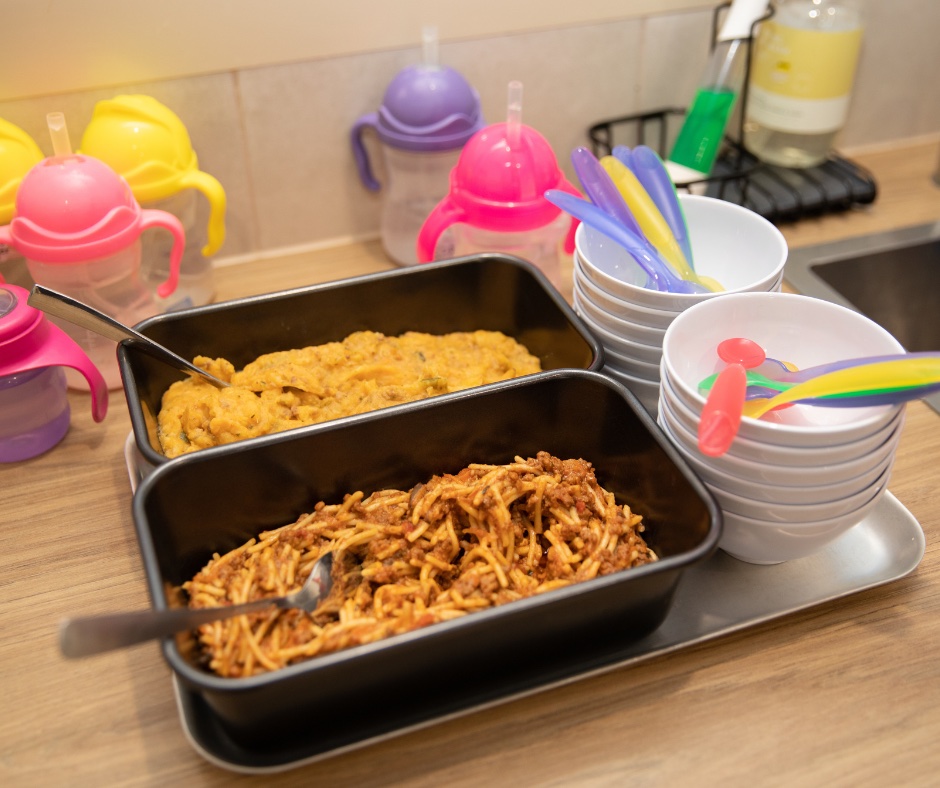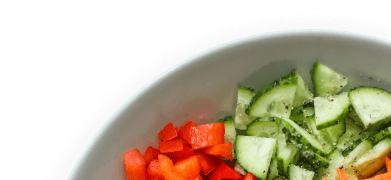What’s in a serve?
Use this table to make sure you offer enough food from each core food group to meet the nutrition needs of 1–5 year old children in care.

Overview
Use this table to make sure you offer enough food from each core food group to meet the nutrition needs of 1–5 year old children in care.
A ‘children’s serve’ refers to the portion of food from each food group that is appropriate for 1–5 year old children.
To be practical in the childcare setting, the children’s serve sizes have been adapted from the standard serve sizes in the Australian Dietary Guidelines. [1]
This document should be used along with the full menu planning guidelines for your service. The menu planning guidelines also specify the types and amount of foods to supply each day.
There are guidelines for:
- long day care
- family day care
| Food group | One child's serve is |
|---|---|
| Lean meat and poultry, fish, eggs, tofu, nuts and seeds and legumes/beans | 50g of raw meat/poultry or equivalent, such as: 50g raw lean red meat (e.g. beef, lamb, kangaroo), lean pork or poultry without the bone 30g lean cooked red meat 40g cooked chicken (skin off) 60g raw fish or 50g canned or cooked fish 35g dry weight beans or legumes or 85g (½ cup) cooked or canned (drained) beans or legumes 15g peanut butter or nuts (if centre policy allows) 1 egg 20g dry weight Textured Vegetable Protein (TVP) 85g tofu 60g hummus |
| Food group | One child's serve is |
|---|---|
| Lean meat and poultry, fish, eggs, tofu, nuts and seeds and legumes/beans (c'ued) | This is equal to half a serve of lean meat and poultry, fish, eggs, tofu, nuts and seeds and legumes/beans in the Australian Dietary Guidelines. Note: Offer 1 children’s serve of lean meat, poultry, fish or alternatives per child per day to meet the menu planning guideline requirements. |
| Fruit | 75g of fruit or equivalent, such as: 75g fresh fruit* (1 small piece, ½ medium piece or equivalent amount of 2–3 types) 75g (½ cup) diced, cooked or canned (drained) fruit 15g dried fruit# This is equal to half a serve of fruit in the Australian Dietary Guidelines. Note: Offer 1 children’s serve of fruit per child per day to meet the menu planning guideline requirements. |
| Vegetables and legumes/beans | 75g of vegetables/legumes or equivalent, such as: 75g fresh, frozen, canned (drained) or cooked vegetables* (½ cup cooked, 1 cup salad, ½ medium potato) 30g dry weight beans or legumes or 75g (½ cup) cooked or canned beans or legumes (drained) This is equal to one serve of vegetables and legumes/beans in the Australian Dietary Guidelines. Note: Offer 1–1½ children’s serves of vegetables and legumes/beans per child per day to meet the menu planning guideline requirements. |
| Milk, yoghurt, cheese and/or alternatives | 100mL of milk or equivalent, such as: 100mL milk/calcium fortified soy or rice drink 50mL evaporated milk 15g milk powder 100mL custard 80g yoghurt/calcium fortified soy yoghurt 15g hard cheese (1 slice), 50g ricotta cheese This is just under half a serve of milk, yoghurt, cheese and/or alternatives in the Australian Dietary Guidelines. Note: Offer 2 children’s serves of milk, yoghurt, cheese or calcium fortified alternatives per child per day to meet the menu planning guideline requirements |
| Grain (cereal) foods | 1 slice of bread or equivalent, such as: 40g bread (1 slice, ½ medium roll or flatbread) 1 crumpet or small English muffin 30g breakfast cereal (⅔ cup), 2 Weetbix™ or similar, ¼ cup muesli or porridge 30g dry/uncooked (1/2 cup if cooked/boiled) rice, pasta, noodles, couscous, barley, buckwheat, semolina, cornmeal, quinoa, polenta 1/3 cup of fresh/uncooked pasta 30g flour (¼ cup) 35g crispbread (3–4 cracker biscuits or crispbread, 3 thick rice cakes, 6 thin rice cakes or corn thins, 12 plain rice crackers) This is equal to one serve of grain (cereal) foods in the Australian Dietary Guidelines. Note: Offer 2 children’s serves of grain (cereal) foods per child per day to meet the menu planning guideline requirements. 35g raw potato can be counted as grain food if the menu meets minimum vegetable requirements |
* Some hard, raw fruit and vegetables such as carrot, celery and apple may need to be cooked, mashed, grated or very finely sliced to reduce risk of choking .
# Dried fruit leaves a sticky residue on teeth and can contribute to tooth decay. If included on the menu it should only be offered once per week.
For more information please phone 1300 22 52 88 or email heas@nutritionaustralia.org.au
Except where otherwise indicated, the images in this document show models and illustrative settings only, and do not necessarily depict actual services, facilities or recipients of services. This document may contain images of deceased Aboriginal and Torres Strait Islander peoples. In this document, ‘Aboriginal’ refers to both Aboriginal and Torres Strait Islander people. ‘Indigenous’ or ‘Koori/Koorie’ is retained when part of the title of a report, program or quotation. Copyright © State of Victoria 2016
Written and reviewed by dietitians and nutritionists at Nutrition Australia, with support from the Victorian Government.

Featured recipes
Explore all recipes
Register your interest
"*" indicates required fields






